C
Coleymusic
New member
Hi everyone, I'm in the process of drawing up plans for our new house build. The basement will be left for my use, since the kids will have their play area upstairs. I will have need some storage (5.5x13 - including electric and water heater), a small washroom (5.5 x 8 - sink, toilet, perhaps a standing shower), a sitting room (14 x 16 - small lounge) and the studio space. The basement is in an L shape (build around the foundation of our garage).
The way I see it, I should have about 26-27 feet in length, and about 13 to 15 feet wide for the studio space. My current format is one live room for everything (12x16), and one control room (10x10). It's worked well so far, but perhaps I could do something differently.
We'll be topping out our budget on the house, so I may not be able to do a "Paul Woodblock"-esque job on it. But any tip would be great on what I should do for the floors, walls, divisions (split the space differently?), materials... the contractor plans on finishing the basement, but that basically means gyproc 2inches off the cement foundations with insulation, floating wood floors, and one wall being put up. I might have to do any other divisions myself.
Looking forward to your input. What's the most important thing that I should make sure is done, what is essential? Where can I cut to reinvest elsewhere? What are the best divisions, etc...
Thanks,
JF
The way I see it, I should have about 26-27 feet in length, and about 13 to 15 feet wide for the studio space. My current format is one live room for everything (12x16), and one control room (10x10). It's worked well so far, but perhaps I could do something differently.
We'll be topping out our budget on the house, so I may not be able to do a "Paul Woodblock"-esque job on it. But any tip would be great on what I should do for the floors, walls, divisions (split the space differently?), materials... the contractor plans on finishing the basement, but that basically means gyproc 2inches off the cement foundations with insulation, floating wood floors, and one wall being put up. I might have to do any other divisions myself.
Looking forward to your input. What's the most important thing that I should make sure is done, what is essential? Where can I cut to reinvest elsewhere? What are the best divisions, etc...
Thanks,
JF


 and Find out how much isolation you need AND determine your room sizes based on room ratios that support good modal distribution.
and Find out how much isolation you need AND determine your room sizes based on room ratios that support good modal distribution. 

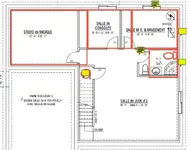
 - I recommend that you extend the line from the bottom of the Studio de Musique straight across and move the toilet down into the Salle de Jeux. Make the CR mix position face the exterior window and have the entry to the Studio de Musique through/via the Control room. Center the door to the CR at the rear of the room. The arrangement room is not as critical.
- I recommend that you extend the line from the bottom of the Studio de Musique straight across and move the toilet down into the Salle de Jeux. Make the CR mix position face the exterior window and have the entry to the Studio de Musique through/via the Control room. Center the door to the CR at the rear of the room. The arrangement room is not as critical.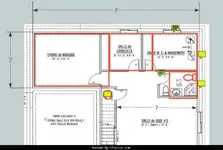
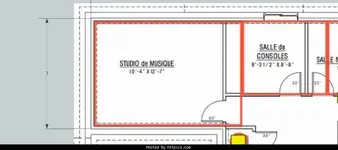
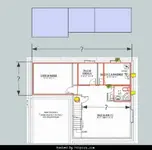

 ....this is what I'm talking about.
....this is what I'm talking about.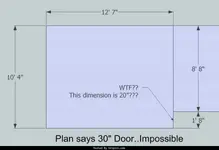
 NO Excel. Excel Viewer is useless.
NO Excel. Excel Viewer is useless. I haven't done anything yet. But thanks anyway. However, give me a little time and some more info and I'd be happy to do some stuff in Sketchup. But I think I'd like to get the Modal calc's done. Unfortunately, I don't have Excel on my computer, so maybe someone else can help out with that. But here's the deal.
I haven't done anything yet. But thanks anyway. However, give me a little time and some more info and I'd be happy to do some stuff in Sketchup. But I think I'd like to get the Modal calc's done. Unfortunately, I don't have Excel on my computer, so maybe someone else can help out with that. But here's the deal.